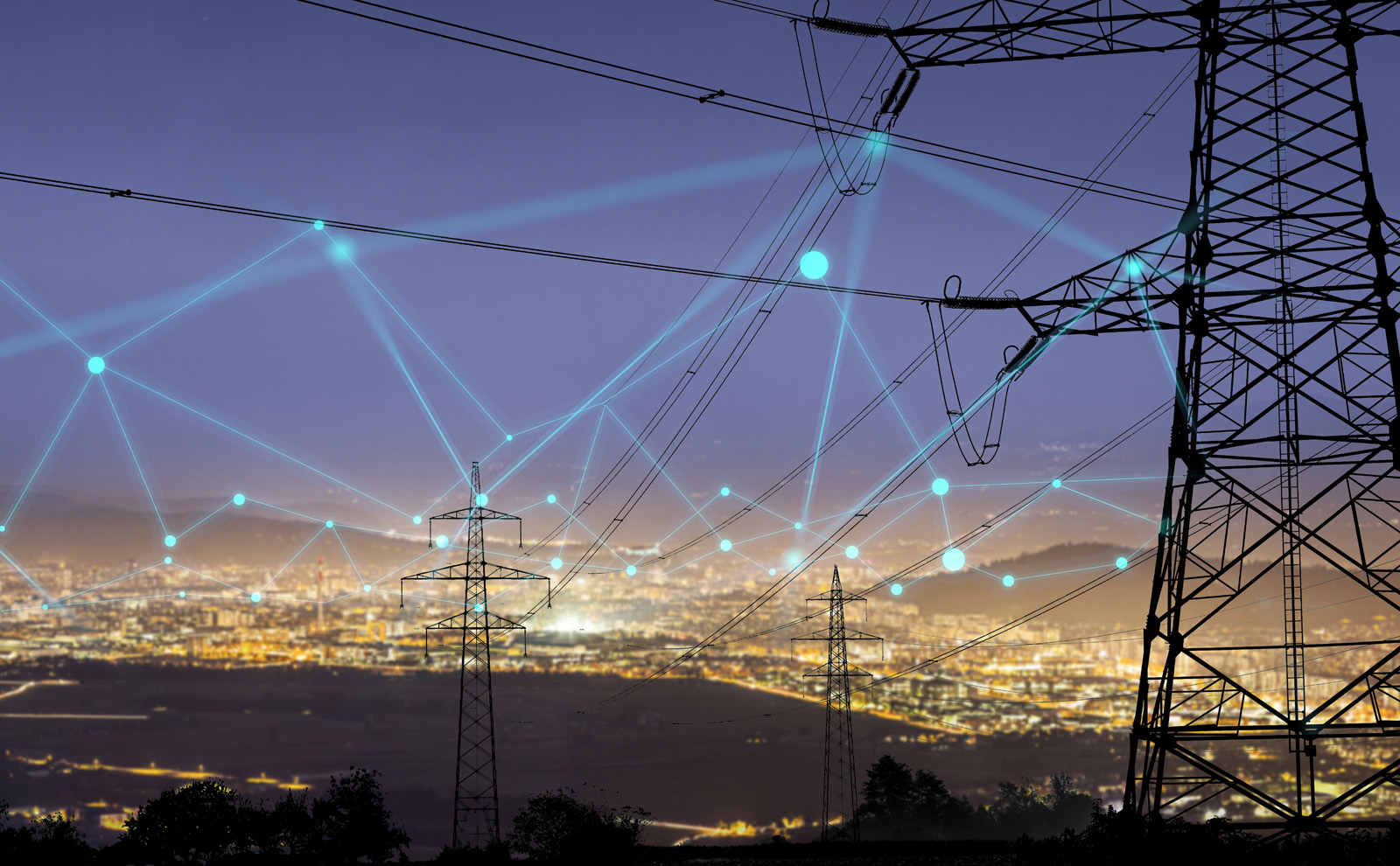Einleitung Der weltweite Energiebedarf steigt parallel zu den dringenden Forderungen nach Klimaschutzmaßnahmen. Traditionelle Stromnetze, die vor Jahrzehnten entworfen wurden, stehen in dieser neuen Ära vor zahlreichen Herausforderungen. Smart Grids haben sich als revolutionäre Lösung herausgestellt, Integration modernster Technologien zur Optimierung der Energienutzung, Erneuerbare Energiequellen berücksichtigen, und die Netzzuverlässigkeit verbessern. Dieser Artikel untersucht die Schlüsseltechnologien, Anwendungen, Vorteile, Herausforderungen, und Aussichten auf intelligente Netze, Anbieten von Beispielen in realer Welt, um ihr transformatives Potenzial zu unterstreichen.

Kerntechnologien von Smart Grids
Smart Grids verlassen sich auf eine Mischung aus fortschrittlichen Technologien:
1. Internet der Dinge (IoT): IoT verbindet Geräte wie Sensoren, Transformatoren, und Messgeräte, um Echtzeitüberwachung und -anpassungen zu ermöglichen. Zum Beispiel, in den USA, Pazifikgas und elektrisch (Pg&E) hat Smart Messern implementiert, die sofortige Aktualisierungen des Energieverbrauchs liefern, Unterstützung der Verbraucher helfen, Kosten und Energieabfälle zu senken.
2. Künstliche Intelligenz (KI): KI optimiert die Gitteroperationen, einschließlich der Vorhersage von Vorhersagewartung und Last. In Spanien, Red Eléctrica beschäftigt KI, um den Strombedarf zu antizipieren und eine effiziente Stromverteilung zu gewährleisten.
3. Energiespeichertechnologien: Batterien und andere Speichersysteme stabilisieren das Netz, indem er überschüssige Energie aus erneuerbaren Quellen speichert. Tesla “Hornsdale Power Reserve” in Südaustralien, Eine der größten Lithium-Ionen-Batterien der Welt, hat die Netzkosten jährlich um Millionen gesenkt und gleichzeitig die Zuverlässigkeit verbessert.
4. Blockchain -Technologie: Sichere und transparente Blockchain-Systeme ermöglichen den Peer-to-Peer-Energiehandel. Mit Brooklyn Microgrid in New York können die Bewohnern Solarenergie mit Nachbarn tauschen, Schaffung eines dezentralen Marktmarktes.
Diese Technologien verbessern gemeinsam die Flexibilität des Netzes, Effizienz, und Anpassungsfähigkeit, Unterstützung seiner Fähigkeit, modernen Energiebedarf zu decken.

Anwendungsbereiche von Smart Grids
Netzbetrieb und Optimierung
Smart Grids bereitstellen erweiterte Sensoren und Algorithmen für die Echtzeitoptimierung. Zum Beispiel, Italiens Enel hat eine Smart Grid -Plattform entwickelt, die verteilte Energieressourcen integriert (DERS), Ausgleich von Angebot und Nachfrage im ganzen Land ausbalancieren.
Integration der erneuerbaren Energien
Die Integration erneuerbarer Energien ist ein Eckpfeiler der Smart Grid -Entwicklung. Wind und Solarenergie, obwohl variabel, kann effektiv mit fortschrittlichen Gittersystemen verwaltet werden. Dänemark veranschaulicht dies, mit Over 50% seiner aus der Windenergie erzeugten Elektrizität, nahtlos in das Netz eingebaut mit intelligenten Technologien eingebaut.
Smart Homes und Elektrofahrzeuge (Elektrofahrzeuge)
Smart Homes mit IoT-fähigen Geräten und EVs, die mit Ladeennetzwerken verbunden sind, zeigen, wie sich intelligente Netze bis zum Alltag erstrecken. Unternehmen wie Chargepoint haben dynamische Ladelösungen eingeführt, die EV-Ladezeiten mit Off-Peak-Stunden ausrichten, um die Belastung des Netzes zu minimieren.
Ländliche Elektrifizierung
In abgelegenen Bereichen, Mikrogrids, die von Sonnenkollektoren und Speichereinheiten angetrieben werden, spielen eine wichtige Rolle. Zum Beispiel, in Indien, Intelligente Mikrogrids tragen dazu bei, Unterstützung des Wirtschaftswachstums und Verbesserung der Lebensqualität.
Vorteile und Herausforderungen von intelligenten Gittern
Vorteile
Erhöhte Energieeffizienz: Echtzeitdaten und Analysen ermöglichen eine bessere Energieverteilung, Minimierung von Verlusten und Reduzierung des Gesamtverbrauchs.
Verbesserte Zuverlässigkeit: Fehlererkennung und Selbstheilungstechnologien minimieren Ausfälle und beschleunigen die Wiederherstellung. Ein bemerkenswertes Beispiel ist die USA. Smart Grid Investment Grant Program von Department of Energy, Dies hat die Zuverlässigkeit der Gitter in mehreren Bundesstaaten verbessert.
Erleichtert die Dekarbonisierung: Durch die Ermöglichung erneuerbarer Energieintegration und Förderung energieeffizienter Praktiken, Smart Grids tragen direkt dazu bei, globale Ziele für die Kohlenstoffneutralität zu erreichen.
Herausforderungen
Erhebliche Anlagebedürfnisse: Die Implementierung intelligenter Netze erfordert ein erhebliches Vorab -Kapital für Infrastruktur und Technologie.
Technologische Komplexität: Koordination einer Vielzahl von Systemen, von erneuerbaren Energien zu traditionellen Kraftwerken, erfordert robuste Interoperabilitätsstandards.
Cybersicherheitsrisiken: Wenn digitale Systeme wachsen, So auch ihre Anfälligkeit für Cyberangriffe. Die Verbesserung der Gittersicherheit ist eine fortlaufende Herausforderung, die ständige Innovationen und Wachsamkeit erfordert.

Globale und chinesische Smart Grid -Entwicklungen
Globale Trends
Global, Intelligente Netze werden als die Zukunft der Stromversorgungssysteme angenommen. Nach Angaben der Internationalen Energieagentur (IEA), Der Smart Grid -Markt wird voraussichtlich zu wachsen $650 Milliarden von 2025. Länder wie Deutschland investieren stark in intelligente Messgeräte und regionale Netzverbesserungen, um die Energieeffizienz zu verbessern und die Kohlenstoffemissionen zu verringern.
Smart Grid
Die Entwicklung in Chinachina führt den Weg mit seinen “Allgegenwärtiges elektrisches Internet der Dinge” Initiative, Big Data integrieren, KI, und IoT in seine Stromversorgungssysteme. Die State Grid Corporation in China hat eine umfangreiche ultrahoch-hohe Spannung entwickelt (UHV) Netzwerk, was effizient erneuerbare Energien über große Entfernungen überträgt, Regionen mit hohem Energiebedarf unterstützen.
Intelligente Gitter und Nachhaltigkeit
Annahme der Einführung der grünen Energie
Smart Grids erleichtern die Einführung erneuerbarer Energien durch die Verwaltung seiner inhärenten Variabilität. Speichersysteme sorgen für eine konstante Stromversorgung, selbst wenn Solar- oder Windressourcen schwanken.
Verbesserung des Energiezugriffs
In Entwicklungsregionen, Intelligente Gitter sind der Schlüssel zum Erreichen des universellen Energiezugangs. Mikrogrids und dezentrale Stromversorgungssysteme, Angetrieben von erneuerbaren Energien, Bieten Sie eine nachhaltige Lösung für die Elektrifizierung.
Förderung der Ziele für nachhaltige Entwicklung (SDGs)
Smart Grids tragen zu mehreren SDGs bei, einschließlich erschwinglicher und sauberer Energie (SDG 7) und nachhaltige Städte und Gemeinschaften (SDG 11). Durch die Reduzierung von CO2 -Fußabdrücken und Ermöglichung des Energiekapitals, Sie unterstützen die globalen Nachhaltigkeitsbemühungen.

Zukünftige Aussichten für intelligente Netze
Technologische Innovationen
Die Fortschritte in Quantencomputer und künstlichen neuronalen Netzwerken werden voraussichtlich die Gitteroperationen revolutionieren, Verbesserung der Vorhersagegenauigkeits- und Energiemanagementfähigkeiten.
Erweiterung von Investitionsmöglichkeiten
Asien, insbesondere China und Indien, ist bereit, ein wichtiger Markt für Smart Grid Technologies zu werden. Initiativen wie die National Smart Grid Mission Indiens unterstreichen das Engagement der Region zur Modernisierung der Energieinfrastruktur.
Internationale Zusammenarbeit
Organisationen wie die Organisation Global Energy Interconnection Development and Cooperation (Geidco) fördern grenzüberschreitender Energiehandel und Zusammenarbeit, Grundarbeiten für ein weltweit miteinander verbundenes Stromnetz legen.
Abschluss
Smart Grids stehen an der Spitze der globalen Energieumwandlung, Bieten Sie beispiellose Möglichkeiten zur Verbesserung der Effizienz, Zuverlässigkeit sicherstellen, und Nachhaltigkeit erreichen. Durch die Integration fortschrittlicher Technologien und die Unterstützung innovativer Richtlinien, Intelligente Netze sind bereit, die Energielandschaft für die kommenden Jahrzehnte umzugestalten. Die internationale Zusammenarbeit und Investitionen in Smart Grid Systems werden zentral sein, um einen widerstandsfähigen Zustand zu erkennen, nachhaltige Energiezukünfte.


